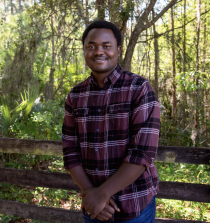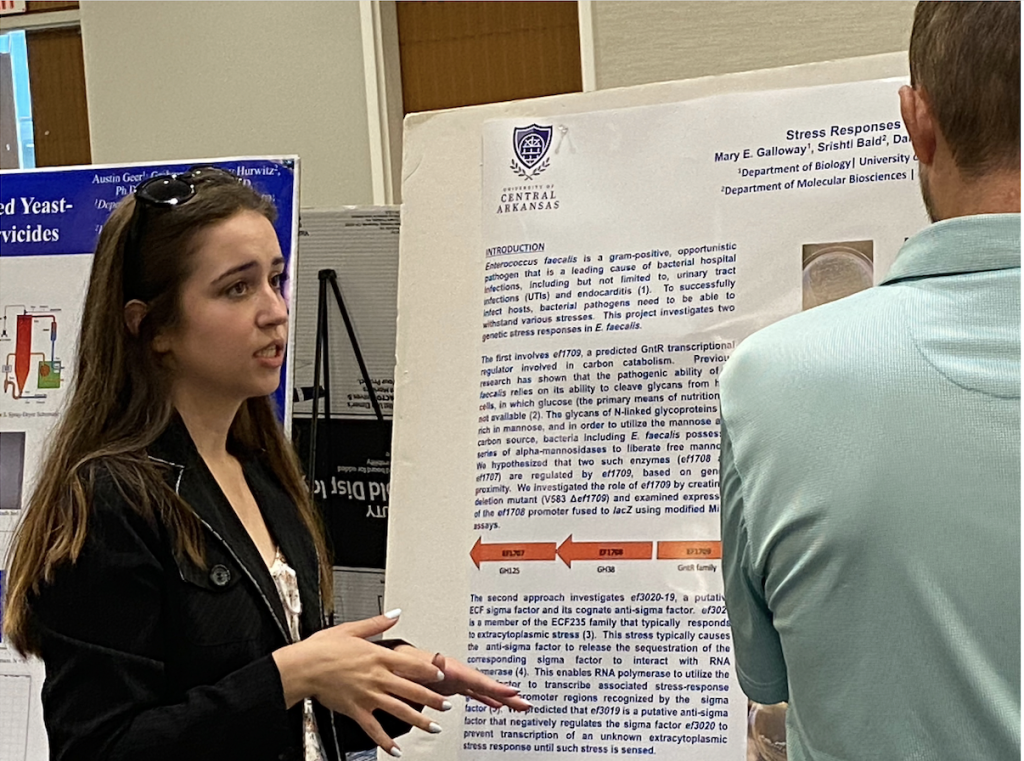At the College of Science and Engineering at the University of Central Arkansas, we are very proud of what our faculty and staff have been able to accomplish and love to celebrate it. Join us in that recognition by taking a few minutes and viewing what our staff has been up to for the past few years in the world of publications.
2024
George Gavrielides, Ginny L. Adams, S. Reid Adams, Matthew H. Connolly- “Environmental correlates with fish assemblage change and biotic homogenization across 40 years in an Ozark, gravel‐bed river basin.” Ecology of Freshwater Fish, vol. 33, no. 3, 27 Mar. 2024, https://doi.org/10.1111/eff.12781
Spooner, Geoffry G. (2024) “Spawning Ecology and Spawning Site Fidelity of Alligator Gar, Atractosteus
spatula, in the Fourche LaFave River: Implications for River-Floodplain Management and Alligator Gar
Conservation,” Southeastern Fishes Council Proceedings: No. 64.
Daniel P. Morrill, Jennifer Main, Grace Davenport, Ginny L. Adams, Steven Reid Adams- “Taxonomic and functional homogenization of fish assemblages in an ozark river associated with pasture land use and constructed water bodies.” Ecology of Freshwater Fish, 14 June 2024, https://doi.org/10.1111/eff.12802
Emily Lane a, Stephen O’Connell, Rhonda McClellan, Duston Morris, Adam Frank, “Identifying disproportionate impacts in Arkansas: New Considerations for Environmental Justice Mapping and implications for leaders.” Applied Geography, vol. 171, Oct. 2024, p. 103390, https://doi.org/10.1016/j.apgeog.2024.103390
Bland, Mark W., and Michael T. Scoles. “College students in the southern US can change their views about evolution.” Journal of Biological Education, 29 Oct. 2024, pp. 1–17, https://doi.org/10.1080/00219266.2024.2419645
2023
Yaqian He, Matthew H. Connolly, Rongting Xu, Xiao Huang, Zhuosen Wang, Marisol Filares Arreguin, Caden Rhodes- “Impacts of irrigation-climate interactions on irrigated soybean yields in the US Arkansas delta from 2003 to 2017.” Progress in Physical Geography: Earth and Environment, vol. 47, no. 5, 11 Apr. 2023, pp. 774–791, https://doi.org/10.1177/03091333231169443
Melanie Good, Andrew J. Mason, Chandralekha Singh- “What physics instructors can learn from astronomy teaching.” The Physics Teacher, vol. 61, no. 5, 1 May 2023, pp. 360–363, https://doi.org/10.1119/5.0074117
Tori A. Hebert, Kevin A. Kuehn, Halvor M. Halvorson- “Land use differentially alters microbial interactions and detritivore feeding during leaf decomposition in headwater streams.” Freshwater Biology, vol. 68, no. 8, 29 May 2023, pp. 1386–1399, https://doi.org/10.1111/fwb.14111
Andrew J. Mason, Jessica M. McCardell, Philip A. White, and John S. Colton – “Improving performance in upper-division electricity and magnetism with explicit incentives to correct mistakes.” Physical Review Physics Education Research, vol. 19, no. 2, 18 July 2023, https://doi.org/10.1103/physrevphyseducres.19.020104
Stephen O’Connell, Jack Boles, Rhonda McClellan, Denise Demers, “Mapping Food Security in Arkansas.” Applied Geography, vol. 158, Sept. 2023, p. 103020, https://doi.org/10.1016/j.apgeog.2023.103020
Zachariah Degon, Seth Dixon, Yasir Rahmatallah, Mary Galloway, Sophia Gulutzo, Hunter Price, John Cook, Galina Glazko, and Arijit Mukherjee- “Azospirillum brasilense improves rice growth under salt stress by regulating the expression of key genes involved in salt stress response, abscisic acid signaling, and nutrient transport, among others.” Frontiers in Agronomy, vol. 5, 4 Oct. 2023, https://doi.org/10.3389/fagro.2023.1216503
2022
John Cook, Zachariah Degon, Devyn Ruiz, John Pope, Yasir Rahmatallah, Arijit Mukherjee- “The plant growth-promoting bacteria, azospirillum brasilense, induce a diverse array of genes in rice shoots and promote their growth.” Plant Growth Regulation, vol. 97, no. 1, 18 Mar. 2022, pp. 143–155, https://doi.org/10.1007/s10725-022-00813-0
Martha Sample, Andrea E. Thode, Courtney Peterson, Michael R. Gallagher, William Flatley,Megan Friggens, Alexander Evans, Rachel Loehman, Shaula Hedwall, Leslie Brandt, Maria Janowiak, and Christopher Swanston- “Adaptation strategies and approaches for managing fire in a changing climate.” Climate, vol. 10, no. 4, 8 Apr. 2022, p. 58, https://doi.org/10.3390/cli10040058
Grant Wiggins, JacklynThomas, Yasir Rahmatallah, Connor Deen, Allee Haynes, Zachariah Degon, GalinaGlazko, and Arijit Mukherjee- “Common gene expression patterns are observed in rice roots during associations with plant growth-promoting bacteria, Herbaspirillum seropedicae and Azospirillum Brasilense.” Scientific Reports, vol. 12, no. 1, 25 May 2022, https://doi.org/10.1038/s41598-022-12285-3
Mukherjee, Arijit- “What do we know from the transcriptomic studies investigating the interactions between plants and plant growth-promoting bacteria?” Frontiers in Plant Science, vol. 13, 15 Sept. 2022, https://doi.org/10.3389/fpls.2022.997308
Patrick J. Desrochers, Ali Abdulrahim, Katherine R. Demaree, Joseph A. Fortner, Jamie D. Freeman,
Makenzie Provorse Long, Madison E. Martin, Carlos J. Gómez-García, Nikolay Gerasimchuk- “Rational design of iron spin-crossover complexes using heteroscorpionate chelates.” Inorganic Chemistry, vol. 61, no. 47, 15 Nov. 2022, pp. 18907–18922, https://doi.org/10.1021/acs.inorgchem.2c02856



 Graduate Research Assistant Anthony Pignatelli and Assistant Professor Hal Halvorson collect samples from Tucker Creek in Conway.
Graduate Research Assistant Anthony Pignatelli and Assistant Professor Hal Halvorson collect samples from Tucker Creek in Conway.


